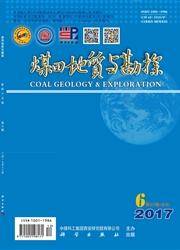

 中文摘要:
中文摘要:
应用傅立叶红外光谱(FTIR)分析技术,采用计算机曲线拟合方法对红外光谱进行分峰处理,通过对自然演化系列和人工模拟实验系列样品的研究,定量分析了不同煤化程度煤的红外光谱特征。研究表明,煤的红外光谱在一定程度上可以定量表征煤化作用程度。含氧基团和烷基侧链随煤化程度的增高以不同的速度发生脱落,且脱落的速度具有明显的阶段性:羧基的减少主要发生在Rmax为0.5%之前,但可以持续到肥煤阶段;脂肪基团的脱落主要发生在沥青化作用阶段内,并导致生成大量的烃类,沥青化作用之前发生的脂肪基团的脱落是煤的未熟和低熟油形成的主要原因;在沥青化阶段之后的高演化阶段,煤中的烷基侧链已经脱落殆尽,芳环缩合程度明显提高。红外光谱的分峰技术和定量,为精细解析煤的结构特征和煤化作用研究提供了一种新的方法。
 英文摘要:
英文摘要:
In this paper, natural and thermal simulation coal samples were selected for Fourier transform infrared spectroscopy (FTIR) analyses, and the infrared spectrum characteristics were quantitatively analyzed and studied by means of the computer curve-fitting method. The results showed that infrared indexes of coal can quantitatively reflect the coalification level to some extent. Oxygen-containing groups and alkyl side chains are cracking off with different velocity obviously. The content of carboxyl decreases mainly before Rm~x=0.5 % and can continue to fat coal stage. Most of aliphatic groups decrease at bituminization stage, resulting in a large number of hydrocarbon generation. Therefore, abscission of aliphatic groups before bituminization is the main reason for immature or low-mature oil generation from coal. After bituminization stage, alkyl side chains are almost exhausted and degree of aromatic ring condensation increases obviously. Curve-fitting analysis and quantitative analysis of infrared spectrum provide a new method for studying coal structure and coalification.
 同期刊论文项目
同期刊论文项目
 同项目期刊论文
同项目期刊论文
 期刊信息
期刊信息
